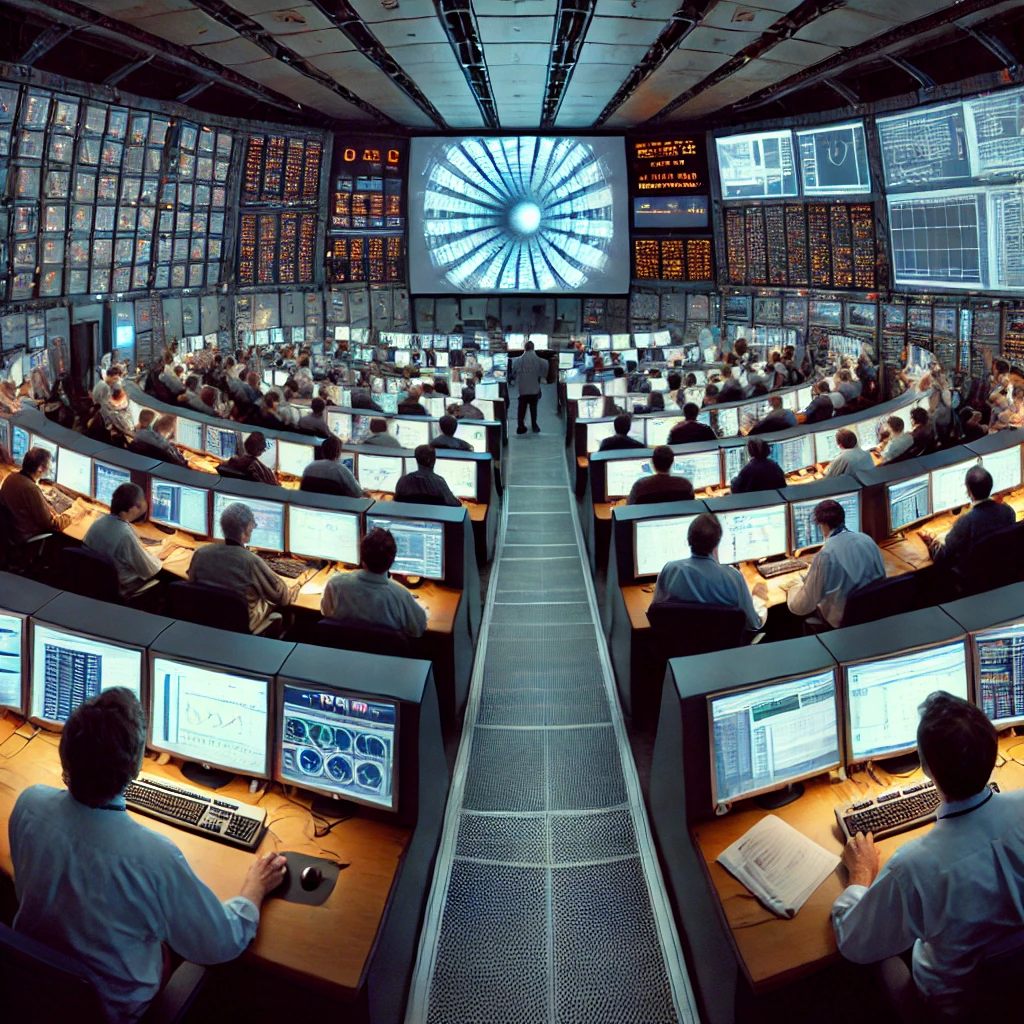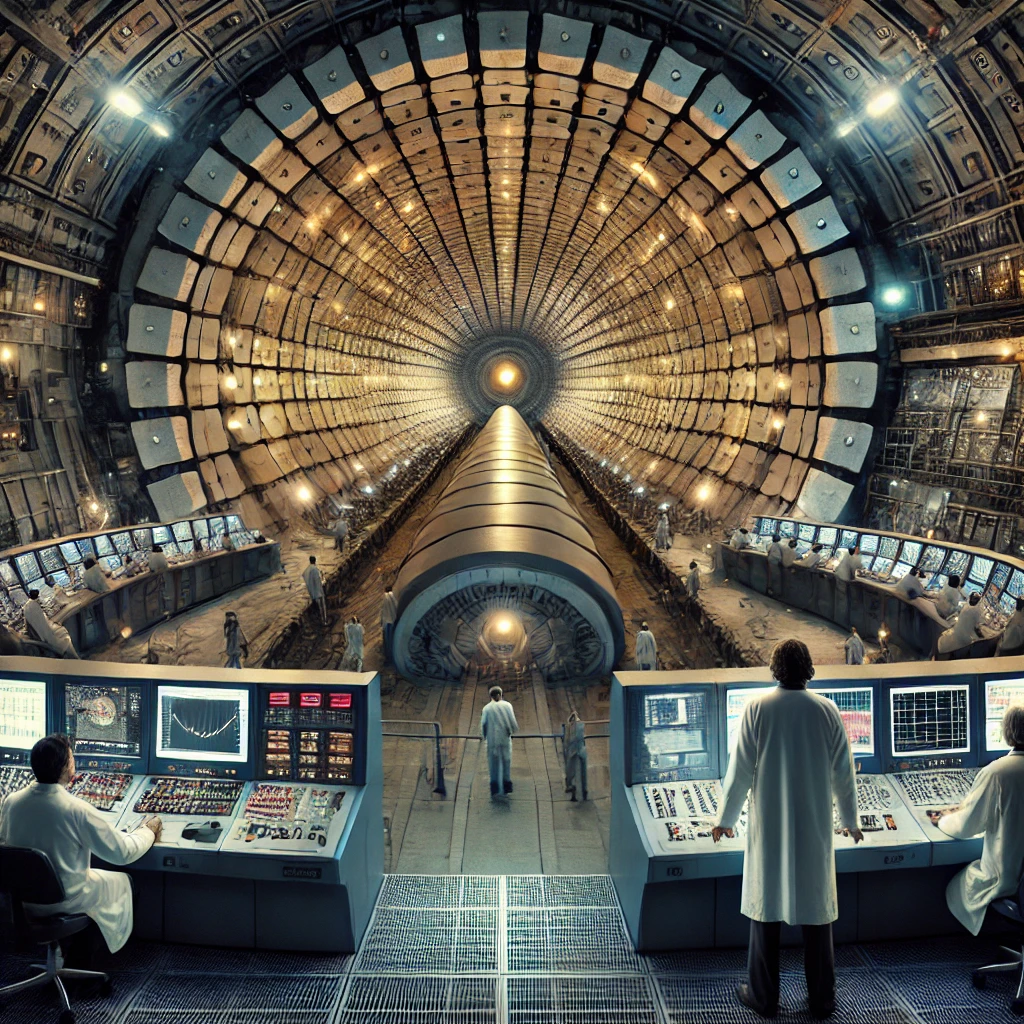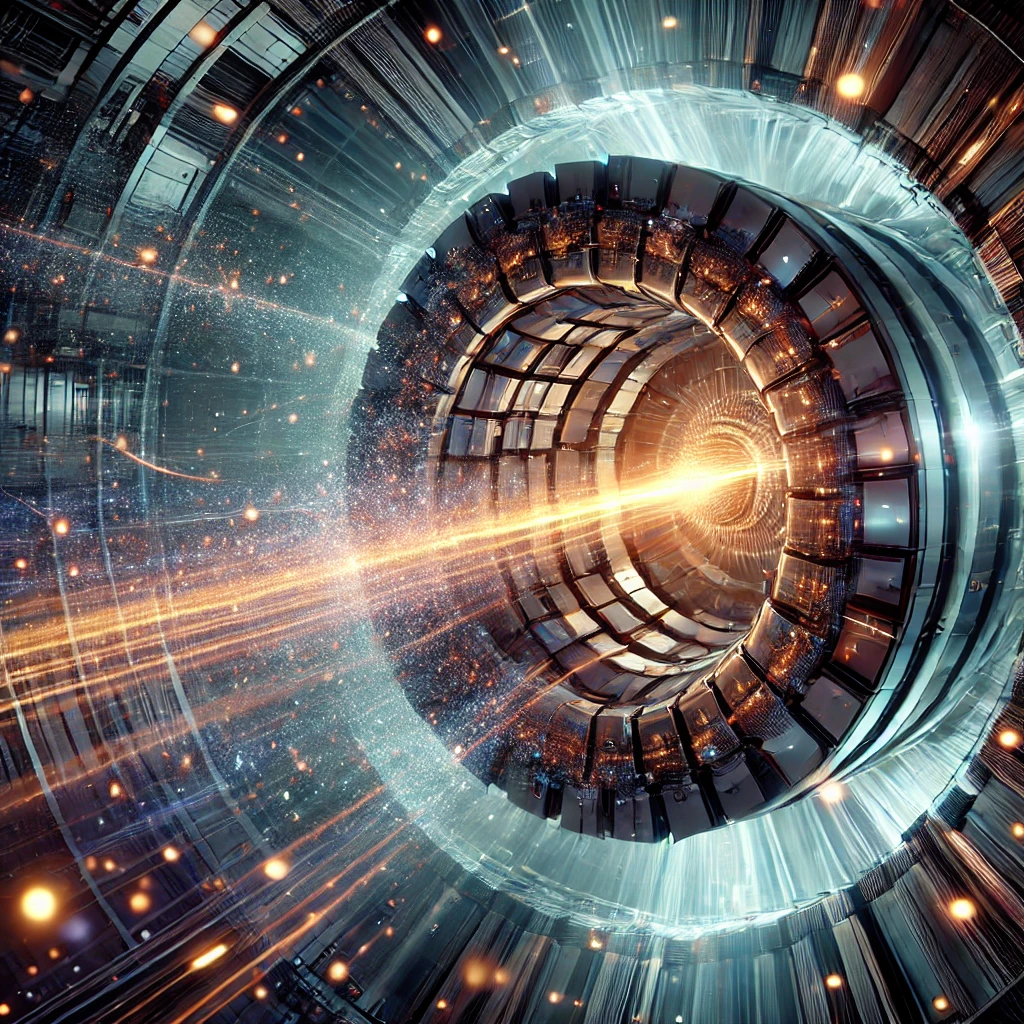On September 10th, 2008, the scientific community and the world at large witnessed a historic moment as the Large Hadron Collider (LHC), the most powerful particle accelerator ever built, conducted its first test operation. Located at CERN (the European Organization for Nuclear Research) near Geneva, Switzerland, the LHC represented the culmination of decades of research and collaboration among thousands of scientists from around the globe. The successful test marked a new era in the exploration of the fundamental forces and particles that make up our universe.
The LHC was designed to address some of the most profound questions in physics, including the origins of mass, the nature of dark matter, and the conditions of the universe moments after the Big Bang. With a circumference of 27 kilometers (about 17 miles) and buried 100 meters (328 feet) underground, the LHC accelerates protons to near the speed of light before smashing them together in high-energy collisions. These collisions create conditions similar to those that existed in the early universe, allowing scientists to study the fundamental components of matter.
The First Test Operation: A Technological Triumph
The first test operation of the LHC on September 10th, 2008, was a critical milestone in the project. During this test, a beam of protons was successfully injected into the accelerator and completed its first full circuit of the collider’s ring. This achievement demonstrated that the complex systems and technologies that make up the LHC were functioning as designed. The test was a significant step toward the collider’s ultimate goal of conducting high-energy collisions to explore the fundamental forces of nature.
The successful test operation was the result of years of meticulous planning, engineering, and international collaboration. The LHC is an incredibly complex machine, with thousands of superconducting magnets, advanced cooling systems, and intricate detectors all working in concert. The first test was not only a technological triumph but also a validation of the hard work and dedication of the scientists, engineers, and technicians who had brought the project to fruition.

The Significance of the LHC in Particle Physics
The Large Hadron Collider is not just a technological marvel; it is also one of the most important tools in the field of particle physics. The LHC was designed to explore the fundamental particles that make up the universe and to test the predictions of the Standard Model of particle physics, the theory that describes the fundamental forces and particles. One of the primary goals of the LHC was to search for the Higgs boson, a particle that had been theorized but never observed, which is responsible for giving mass to other particles.
The discovery of the Higgs boson would confirm the existence of the Higgs field, an essential component of the Standard Model. The successful operation of the LHC and its ability to conduct high-energy collisions were crucial for detecting this elusive particle. Beyond the Higgs boson, the LHC was also expected to provide insights into other fundamental questions, such as the nature of dark matter, the existence of extra dimensions, and the unification of the fundamental forces.
The Discovery of the Higgs Boson
On July 4th, 2012, nearly four years after the first test operation, the LHC achieved one of its most significant milestones: the discovery of the Higgs boson. This discovery was a watershed moment in the field of particle physics and one of the most important scientific achievements of the 21st century. The confirmation of the Higgs boson not only validated the Standard Model but also provided a deeper understanding of how particles acquire mass.
The discovery was the result of countless high-energy collisions conducted within the LHC, with data collected by the ATLAS and CMS detectors. These detectors are massive, sophisticated instruments designed to track and analyze the particles produced in the collisions. The identification of the Higgs boson was a triumph of experimental physics and a testament to the power of the LHC as a tool for exploring the fundamental nature of the universe.
The Broader Impact of the LHC
The impact of the LHC extends beyond the field of particle physics. The technologies developed for the LHC, including advanced superconducting magnets, cryogenics, and data analysis tools, have applications in other areas of science and industry. For example, the LHC’s data processing and storage systems have driven advancements in computing and data science, with applications in fields such as medicine, finance, and artificial intelligence.
The LHC has also had a significant impact on international collaboration in science. The project brought together thousands of scientists, engineers, and technicians from over 100 countries, fostering a spirit of global cooperation and shared discovery. This collaborative model has set a precedent for other large-scale scientific projects, demonstrating the value of international partnerships in tackling the most challenging questions in science.

The Role of the LHC in Popularizing Science
The Large Hadron Collider has also played a key role in popularizing science and making complex scientific concepts accessible to the public. The LHC and its discoveries have captured the public imagination, inspiring documentaries, books, and media coverage that have brought the excitement of particle physics to a wider audience. The search for the Higgs boson, in particular, became a cultural phenomenon, often referred to as the search for the “God particle.”
The LHC’s success in engaging the public with science highlights the importance of communication and education in the scientific process. By making the work of physicists and the significance of their discoveries accessible to non-specialists, the LHC has helped to foster a greater appreciation for science and its role in advancing human knowledge.
Challenges and Future Prospects
Despite its successes, the operation of the LHC has not been without challenges. The complexity of the machine means that it requires regular maintenance and upgrades to continue functioning at peak performance. In the years following its first test operation, the LHC has undergone several upgrades to increase its collision energy and improve the precision of its measurements.
Looking to the future, the LHC is expected to continue operating for many years, with scientists planning even more ambitious experiments to explore the frontiers of particle physics. The ongoing upgrades to the LHC will enable it to probe deeper into the fundamental structure of matter and the forces that govern the universe. The results of these experiments could lead to new discoveries that challenge our understanding of the universe and open up new avenues of scientific inquiry.
The Legacy of the LHC
The legacy of the Large Hadron Collider is already firmly established. As the most powerful particle accelerator ever built, the LHC has pushed the boundaries of human knowledge and expanded our understanding of the universe. The discovery of the Higgs boson alone is a monumental achievement that will be remembered as one of the defining moments in the history of science.
The LHC’s contributions to science extend beyond its specific discoveries. The project has demonstrated the power of international collaboration in science, the importance of perseverance in the face of technical challenges, and the potential for science to inspire and engage the public. The LHC has set a new standard for what is possible in experimental physics, and its impact will be felt for generations to come.

The First Test: A Defining Moment
The first test operation of the Large Hadron Collider on September 10th, 2008, was more than just a technical achievement—it was a defining moment in the history of science. It marked the beginning of a new era in particle physics, one in which humanity could probe the deepest mysteries of the universe with unprecedented precision and power. The successful test was a testament to the ingenuity, dedication, and collaboration of the thousands of people who made the LHC a reality.
As we reflect on the LHC’s first test and its subsequent achievements, it is clear that the Large Hadron Collider is one of the most important scientific instruments ever created. Its contributions to our understanding of the universe are profound, and its legacy will continue to shape the future of science for years to come.
Conclusion: A Milestone in Scientific Exploration
The first test of the Large Hadron Collider in 2008 was a milestone in scientific exploration, representing the beginning of a journey that has already yielded remarkable discoveries and expanded our knowledge of the universe. The LHC’s success is a testament to the power of human ingenuity and the importance of collaboration in advancing science. As the LHC continues to operate and push the boundaries of what we know, its impact on science, technology, and society will only continue to grow, solidifying its place as one of the greatest achievements in the history of science.
